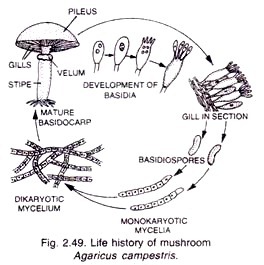Section cutting, staining, mounting of sections are part of biological experiments and investigations.
Advanced studies in life sciences at cellular & molecular level require exposure to techniques like autoradiography, cell fractionation, tissue culture etc.
1. Cytochemical & Histological methods:
A specific part of the organism under study is differentiated from other parts by cutting their sections, staining them with a specific stain or dye and mounting the section to glass slides with the help of a mounting medium.
These methods are used to study the internal structure of any part of plants/ animals and to locate the specific chemical constituents within the cells.
Section cutting or Sectioning:
It is the first step to prepare a slide of the biological material for microscopic investigation. Fresh or preserved materials are cut into thin sections at suitable plane. It is essential to cut section thin enough to observe the details at the required level. Hand sectioning is carried out with sharp razor.
Uniform section of given thickness can be obtained by special section cutting machines called microtome. Prior to microtome section cutting, material is processed which involves dehydration, fixation and embedding of the tissue material in wax blocks. Ultra microtome’s are used to obtain extremely thin sections (20-100 nm) required for observation under electron microscope.
Staining:
Staining is the use of dyes to render distinct colours to different constituents of the tissues under investigation. Some of the stain or dyes used in biological studies are given in the Table 6.1.
Mounting:
Adequately thin and properly stained section of the biological material is required to mounted to glass slides for investigation under the microscope. A drop of mounting medium is put on sections and gently cover slip is lowered on the sample with the help of tweezers.
Air bubbles trapped on the material is gently removed when cover slip is on the material. Extreme care should be taken when handling newly covered slides as it is easy for cover slip to dislodge and damage the tissue. Freshly covered slides should not be examined with microscope, as is possible to get a drop of “wet” mounting media on the objective.
2. Autoradiography:
This technique is used to study different stages and location involved in synthesis of molecules and to trace metabolic events in the cells. The radiolabelled compounds are injected into the organism. Then various tissues are investigated to find out where the radioactivity is located. This is done by using photosensitive film of silver bromide. Whenever in the cell or tissue or the organism, the radio labelled substance is present, silver gets reduce by radiation and is seen as black patches in the auto radiographs.
3. Paper Chromatography:
Chromatography is used to separate the bio-chemical substances present in a living organism. A drop of the chemical substance is put on one end of a long strip of the filter paper. The filter paper is hung in a manner that the end with the drop of the mixture dips into the solvent mixture kept in the tray/jar.
As the liquid is drawn up on the paper, different substances in the mixture begin to separate according to their molecular weight, size and solubility in the solvent and rise up to different heights on the paper. It is then analyzed by using suitable chemicals.
4. Cell Fractionation:
It is essentially separation method for different organelles of the cells such as nucleus, mitochondria, ribosomes etc. The organelles having different particle size and weight get separated by centrifuging them at different speeds.
5. Tissue Culture:
Tissue culture is a technique of biological research in which cells / fragments of tissues from an animal or plant are used to develop a whole organism by providing all necessary conditions for their survival and growth. The cells from an organism are grown in the laboratory on a nutritive medium at a suitable temperature.
In Plant tissue culture, plants or explants such as pieces of leave, stem or root is cultured in a specific plant medium, which contains essential plant nutrients and hormones. Other plant growth factors like light and temperature are maintained and regulated by using artificial conditions. To avoid any contamination during the process, all experiments are conducted under sterile (aseptic) conditions. The explants then develop stem, roots and leaves. The generated plantlets are hardened before planting in outdoor conditions.
Applications of Plant Tissue Culture:
Plant tissue culture has wide applications in agriculture. One major advantage of plant tissue culture is the production of disease and/or pest resistant varieties, thus indirectly increasing the crop yield. Commercially, it is used directly for the propagation of plants that are hard to propagate in natural conditions.
Horticultural plants such as orchids, roses, banana, strawberries, potatoes, apples, etc. are successfully cultured in in-vitro conditions. Plants with valuable secondary products are grown in the controlled conditions by using plant tissue culture technique. It is also used for the propagation of medicinal herbs on a large scale. With plant tissue culture, it is possible to generate virus-free plantlet of vegetatively propagated plants.
